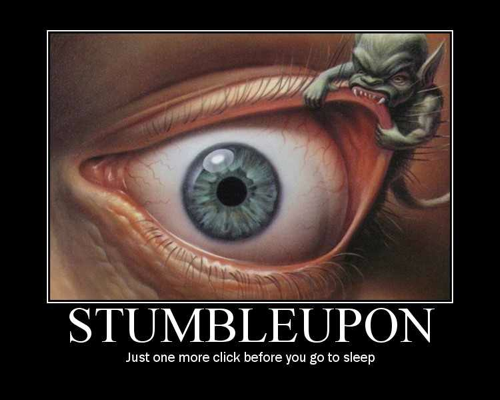As print readers dip into their periodical of choice, they are enticed by catchy titles and headlines of nearby stories, chapters or sibebars. In his Social Theory and Social Structure (1949), sociologist Robert K. Merton called this phenomenon of discovering one thing on the way to another the “serendipity pattern.” In “A Better Pencil,” Dennis Baron aptly points out that:
Skimming printed books and articles may be tedious, but it can produce unexpected results, turning up something by accident that proves to be significant . . .in contrast, the instant, focused digital search we have come to depend on causes us to miss such serendipitous information. (p. 143)
 Of course, the serendipity pattern still exists on the internet—it’s called “stumbling upon” and it’s far more complex than your eye glancing over at a witty headine.
Of course, the serendipity pattern still exists on the internet—it’s called “stumbling upon” and it’s far more complex than your eye glancing over at a witty headine.
Even though Google’s search engine evolves weekly into returning more and more relevant results, it still returns a fair amount of irrelevant data. The lure of interactivity, connectivity and sheer opportunity causes a serendipity pattern of a different sort. And we are confused because it’s not just another headline or a color static advertisement that is catching our eye. It’s the lure of being able to insert ourselves into the process—to comment on a blog post, to take a poll about the subject matter at hand—and it’s the accessibility of all many data types at once (books, magazines, emails, snippets) –these are the things that draw us towards learning about other things.
